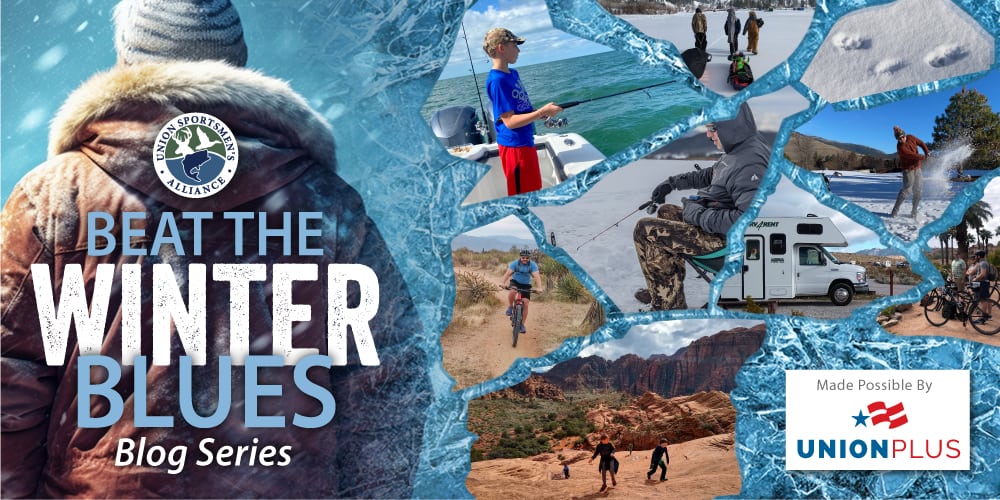
5 Wild Winter Sports You Might Want to Try
By PJ DelHomme
Humans get creative in the cold, dark days of winter in the northern latitudes. Here are a few ways that we’ve attempted to spice up our time in the frozen north.
Winter can get boring if the fish aren’t biting and the snow machine is still in the shop. Football is nearly over, and you can’t spend the entire day in your sweatpants. Ever consider paddling a kayak down a sledding hill? How about connecting yourself to a dog for a quick ski around the golf course? Better yet, how about a little snow golf?
Snow Kayaking
For paddlers who refuse to hang up their boats for the season, snow kayaking is a high-speed, albeit frozen, way to scratch the boating itch in winter. Snow kayakers ride a chair lift or hitch a ride up a mountain on a snowmobile, strap into their boat, and point the bow downhill. The result is an adrenalin-fueled handshake with white death – check out the video below!
The first Snow Kayaking World Championships were held outdoors at the Austrian resort of Lienz in 2007. Most recently, snow kayaking competitions have been moved to indoor ski runs where competitors race down an icy slalom course. Stateside, the sport hasn’t officially caught on, though you can find some industrious paddlers hiking into the backcountry and sliding down. Or perhaps you can suggest the idea to your crazy uncle at the local sledding hill. Extreme snow boaters like Spanish kayaker Aniol Serrasolses slid more than 15 miles down a Chilean volcano. He went from snow through the forest and finally into a lake.
Skijoring
What sounds more inviting than strapping on a pair of skis, grabbing a rope, and then letting a four-legged creature with a mind of its own yank you over the snow? It’s called skijoring, and the name comes from the Norwegian word skikjøring, meaning “ski driving.” The sport has been around for hundreds of years, enjoyed by semi-nomadic reindeer herders in the northern reaches of Scandinavian countries. Can you blame them? Winters up there are dark for a very long time.
When skijoring came to the U.S. around 1915, cowboys replaced reindeer with horses. By 1950, competitors in Leadville, Colorado, added jumps and gates that skiers had to navigate over and through. Today, dozens of skijoring competitions and exhibitions are held across snowier parts of the globe. If horses or reindeer aren’t your thing, you can put a harness on your dog(s), connect yourself to Fido, and pray that your dog isn’t still upset about getting neutered. I’ve seen people skijoring on cross-country ski trails and old logging roads, but I have yet to have the courage or confidence in my dog to try it myself.
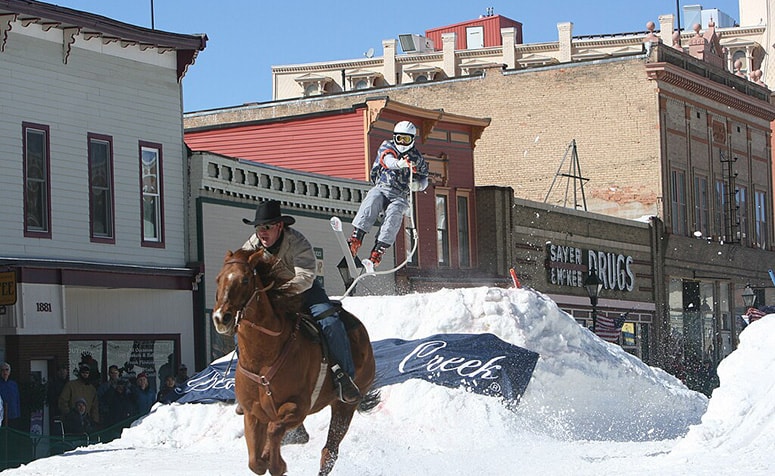
Leadville, Colorado. Photo courtesy of Kaila Angello.
Snowkiting
If flying a kite seems a tad boring, then step on a snowboard or a pair of skis and attach yourself to a megakite. I promise you won’t be bored for long. It’s similar to wakeboarding in the summer. Instead of a boat to pull you, though, you’re flying a giant kite. At the same time, you’re strapped onto a board or into a pair of skis. If it sounds challenging, that’s because it is. A great thing about snowkiting is that you don’t need hills. Get out on a frozen lake with fresh powder and a steady wind.
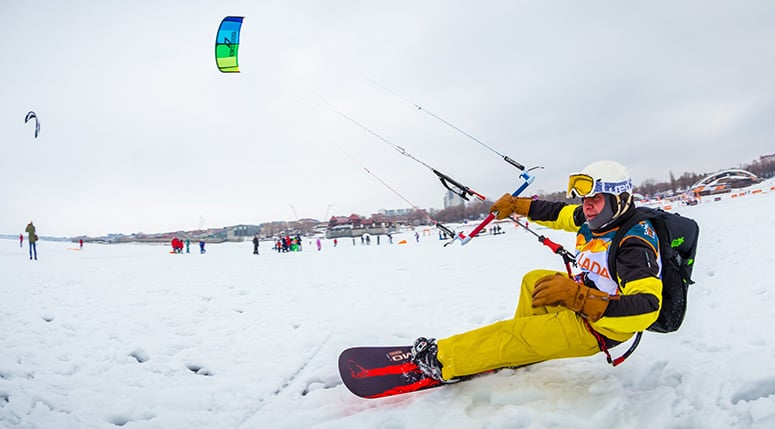
Curling
With team names like Sheetheads, Curl Power, and Broom Enough for Two, it’s hard to believe that curling first appeared at the Olympics in 1924. To be fair, it wasn’t officially added to the Olympic program until 1998. Two teams of four players slide 44-pound granite stones toward a target called the house. The goal is to get your stone closer than the other team’s stones to the center of the house.
If you’ve ever seen curling, you’ve noticed two athletes furiously scrubbing in front of the stone as they slide down the ice with it. That’s because the ice has tiny little bumps (pebbles) that affect the path and speed of the stone. The curlers sweep the ice in front of the stone, heating up and melting the pebbles. The sweepers manipulate the speed and path of the stone, hoping to slide it right into the button or perhaps to bump an opponent’s stone out of the way. A team scores a point for each stone that is closer to the button than the opponent’s best stone. Ten matches, or ends, comprise a curling match. The team with the most points after 10 ends wins.
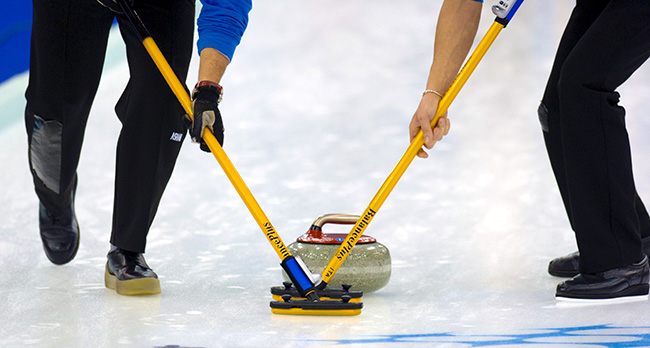
Snow Golf
Yes, snow golf is a thing, and it’s been around since the 1600s. The good news is that you don’t need to worry about sand traps or ponds. The bad news is there are snowbanks, and white golf balls will do you no favors in the snow—better pick a dark color.
In the Alps of Switzerland and France, several groomed golf courses were traditionally open for business in the winter. However, snow has been lacking lately, and some tournaments have been canceled. If you’re serious, turn your sights to the frigid Uummannaq Golf Course off the west coast of Greenland, a good 350 miles north of the Arctic Circle.
If you truly can’t wait for a spring thaw, you should know a couple of things. Use steel shafts. Graphite can shatter in freezing weather. Some courses are groomed, making the fairways look like a ski run with perfect corduroy. Just be sure the course isn’t open to cross-country skiers. The greens, or whites as they’re called in snow golf, are compacted to help the ball roll but don’t count on any effective backspin.
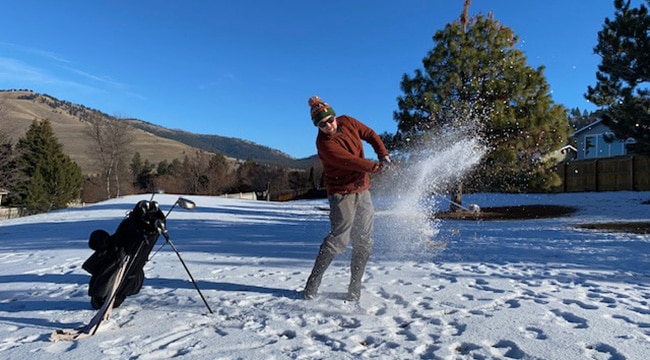
While we realize that you might not actually try any of these sports this winter, we just want you to know there are options out there. And if you do decide to hurl your canoe down a mountain or tether the dog to you and a pair of skis, we wish you the best of luck.
PJ DelHomme writes and edits content from his home in western Montana. He runs Crazy Canyon Media and Crazy Canyon Journal.
Related Articles in this Series:
5 Hot Spots for People Who Need a Break from Winter – Union Sportsmen’s Alliance



